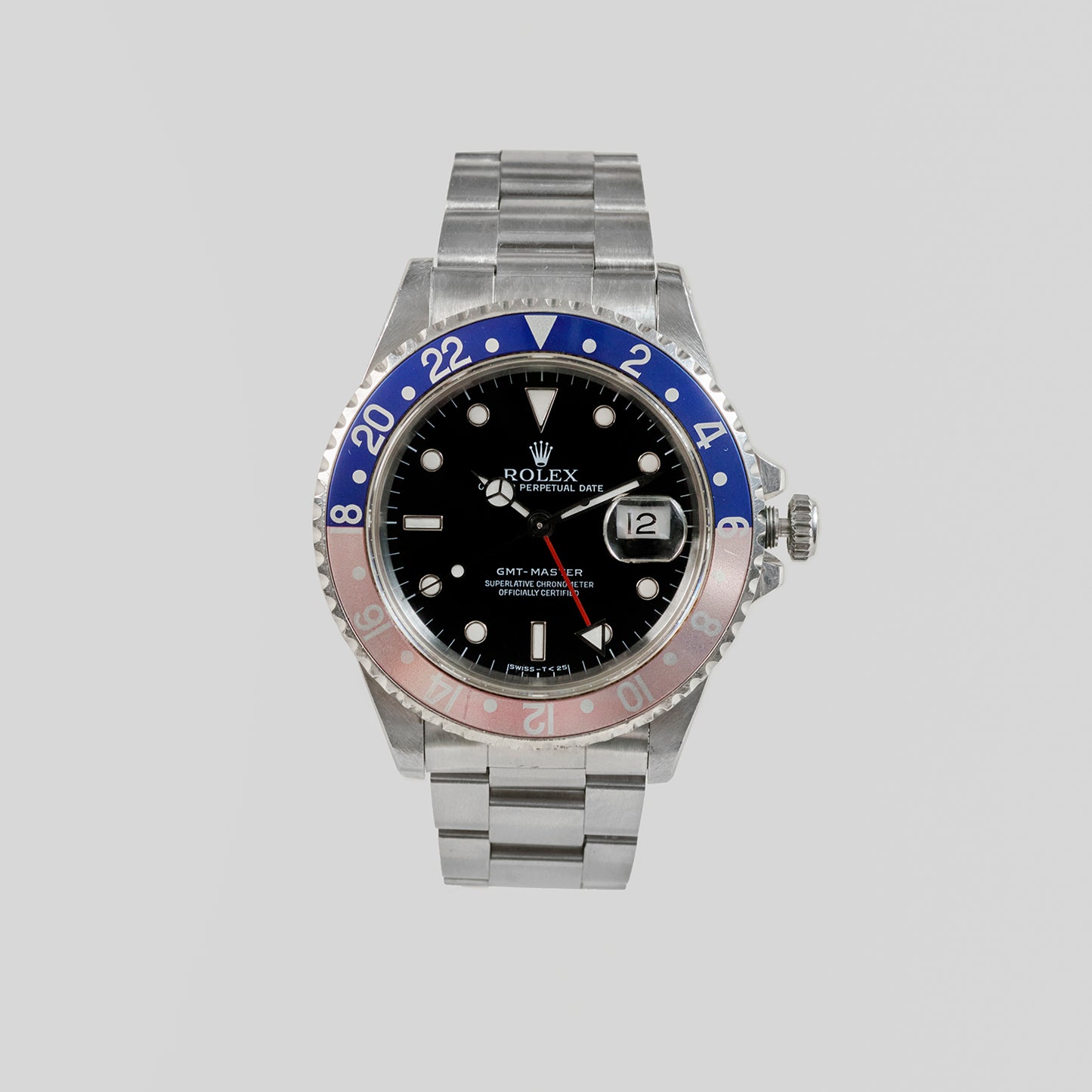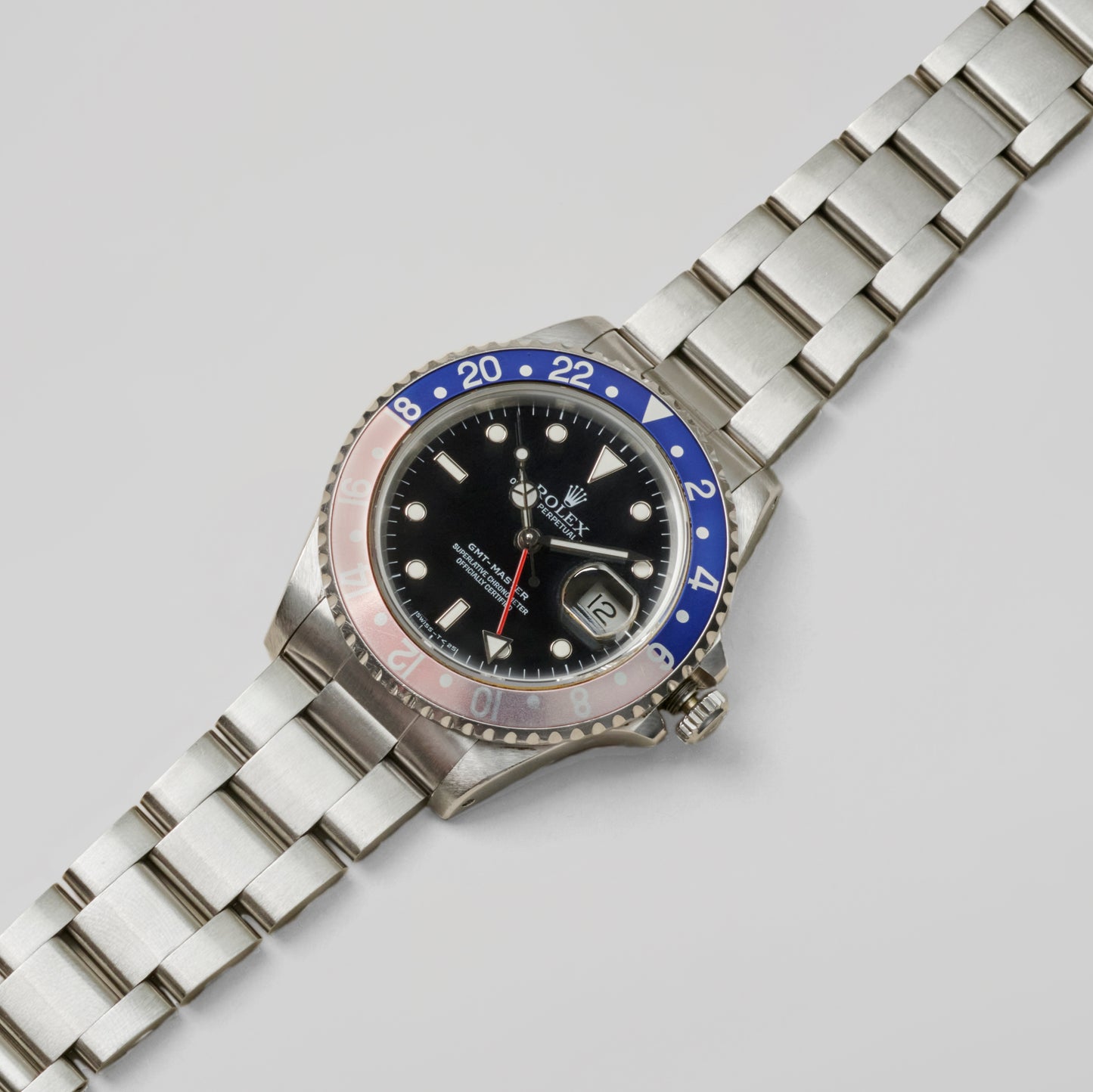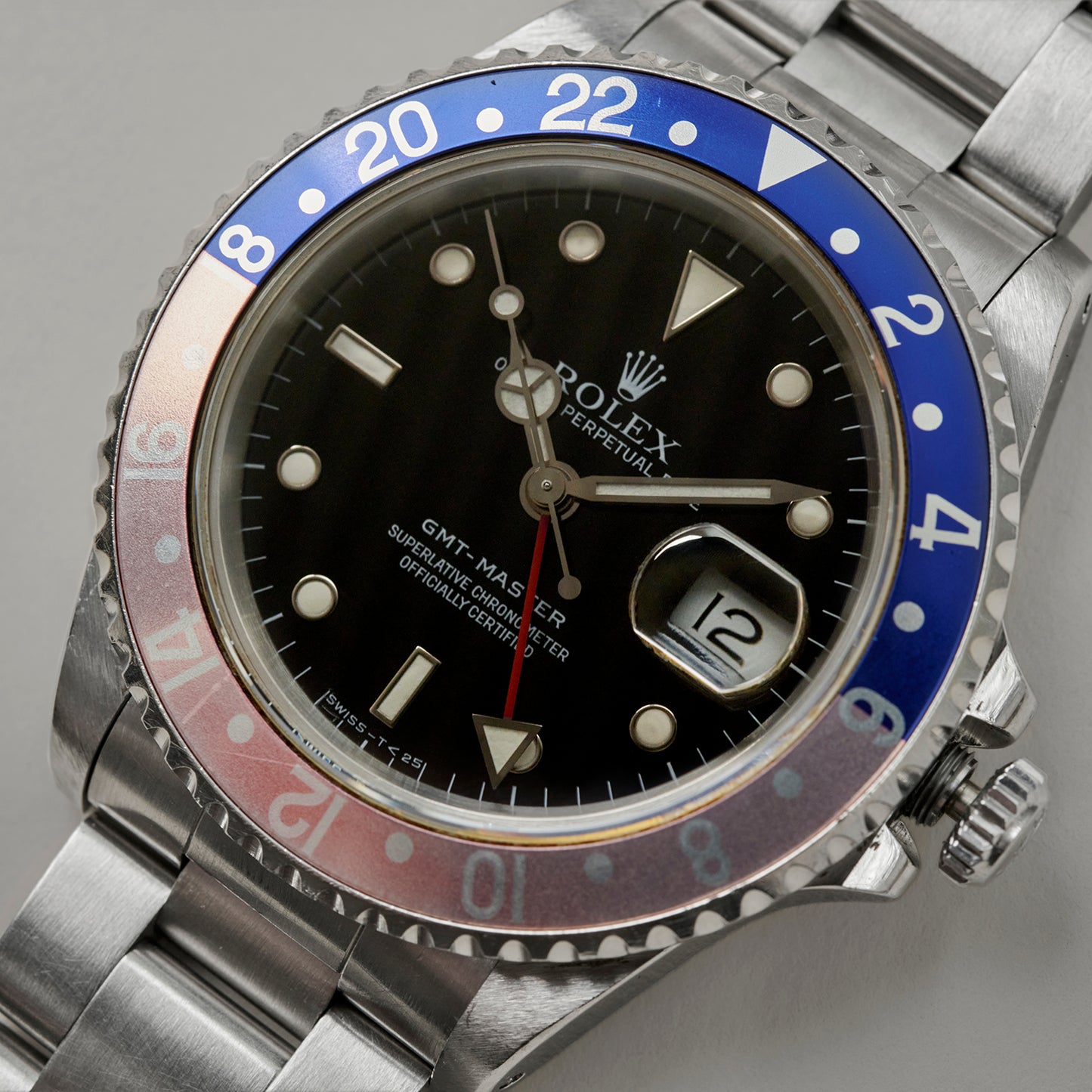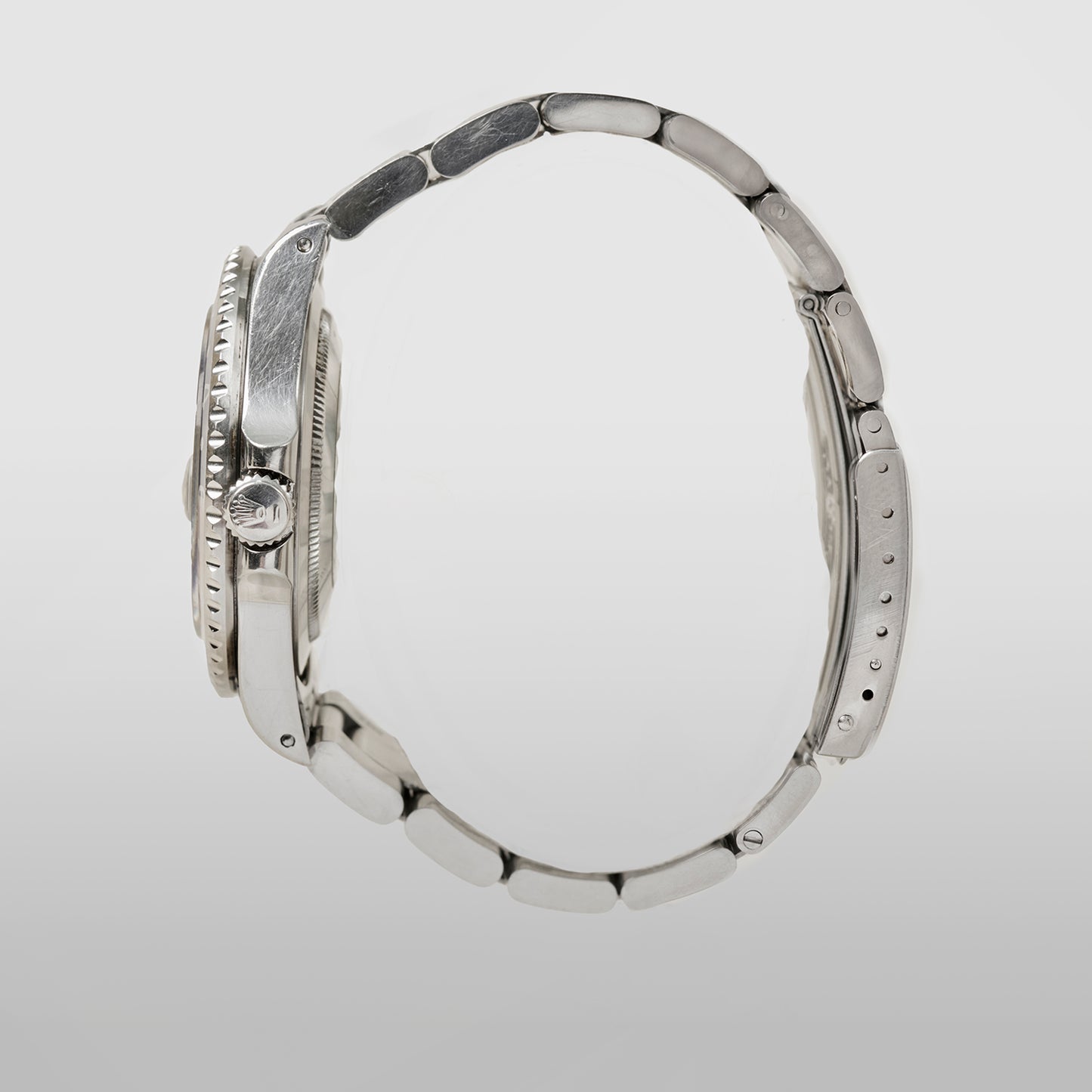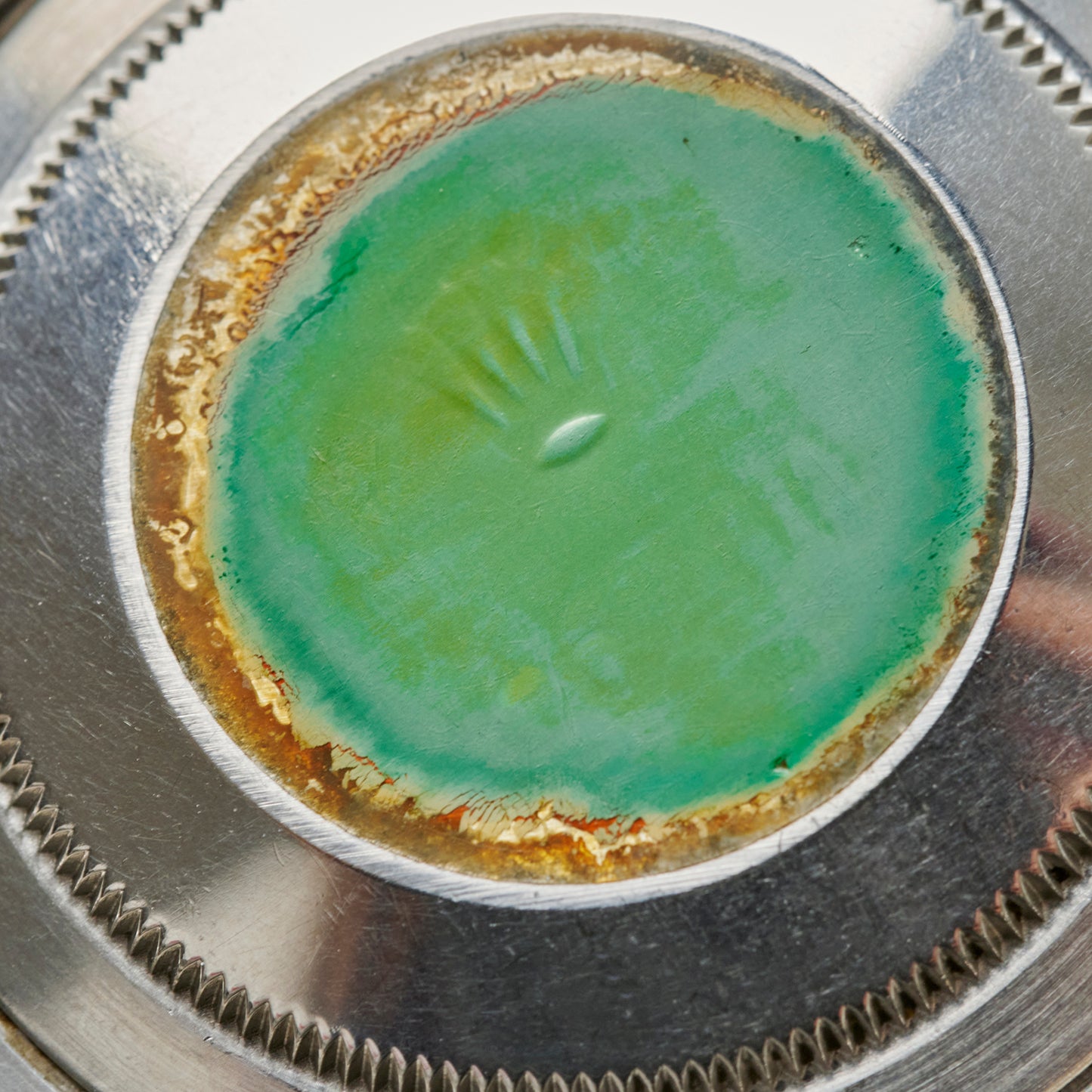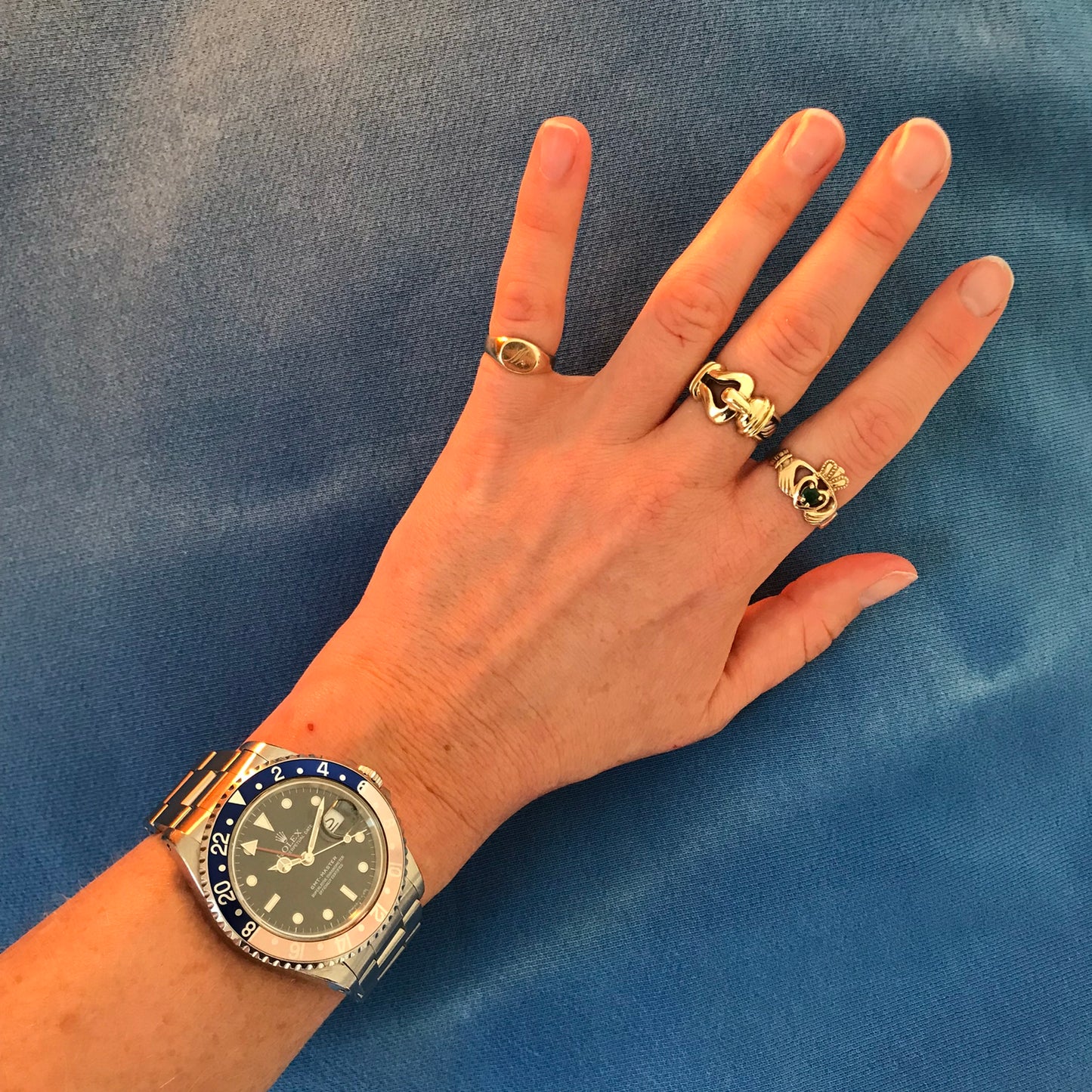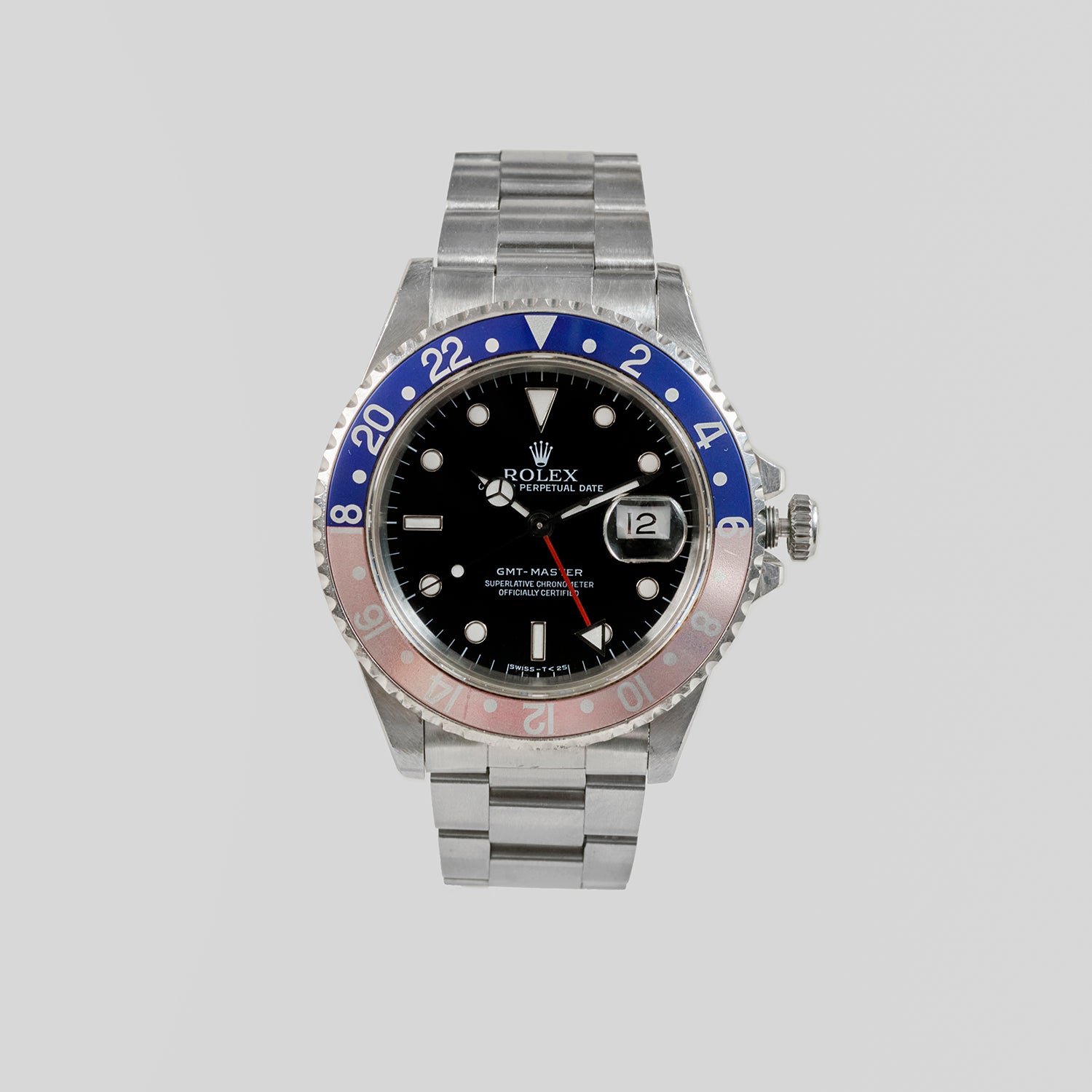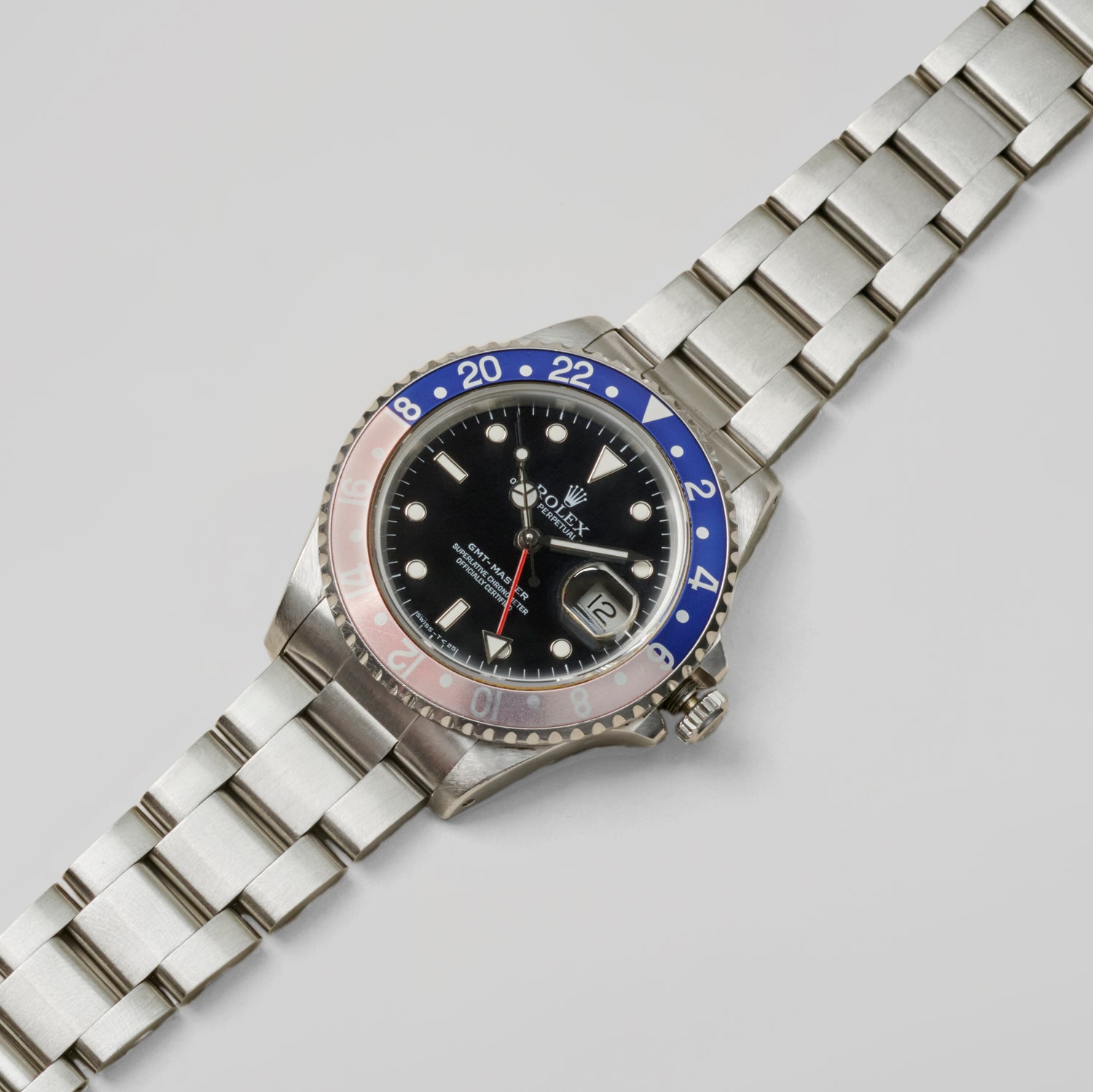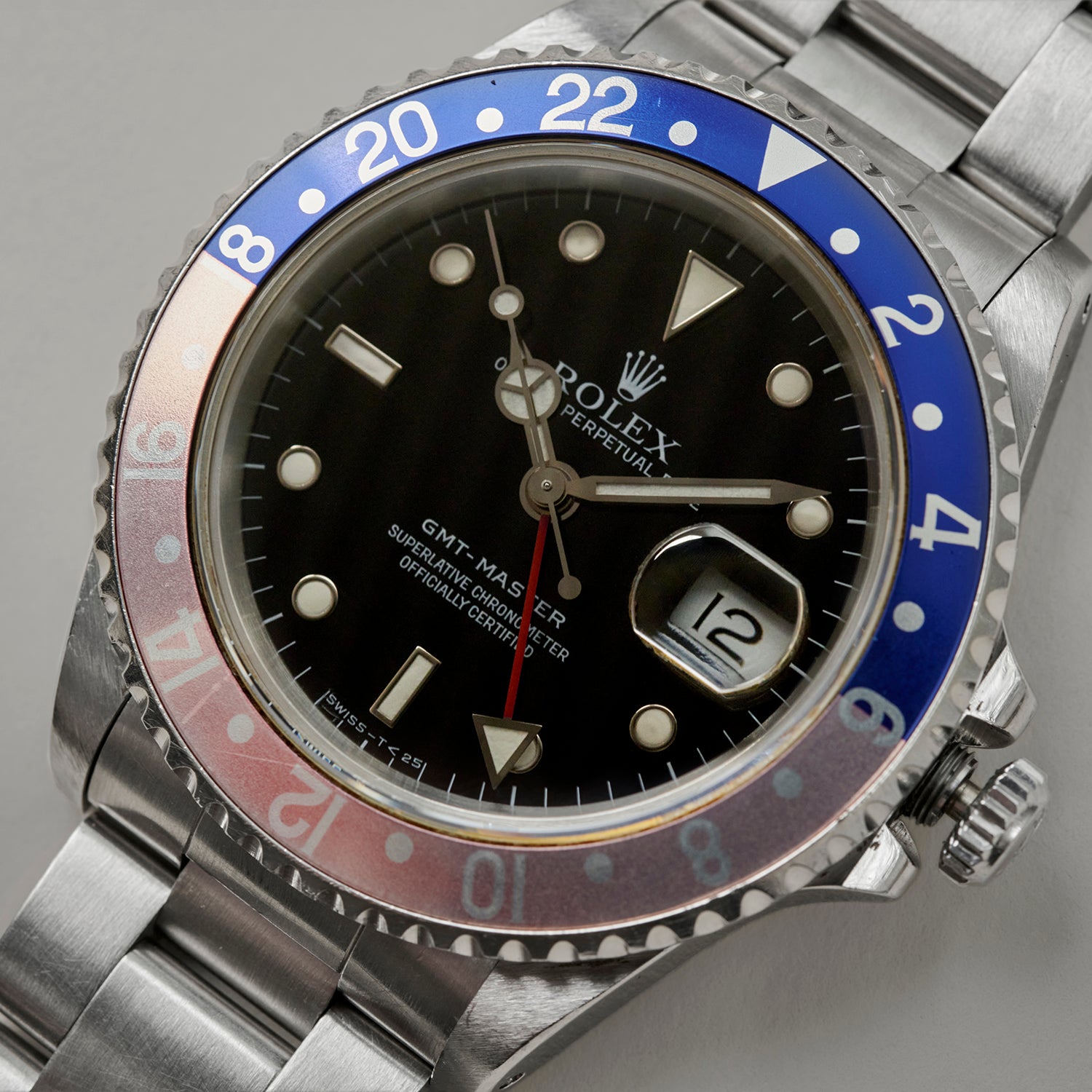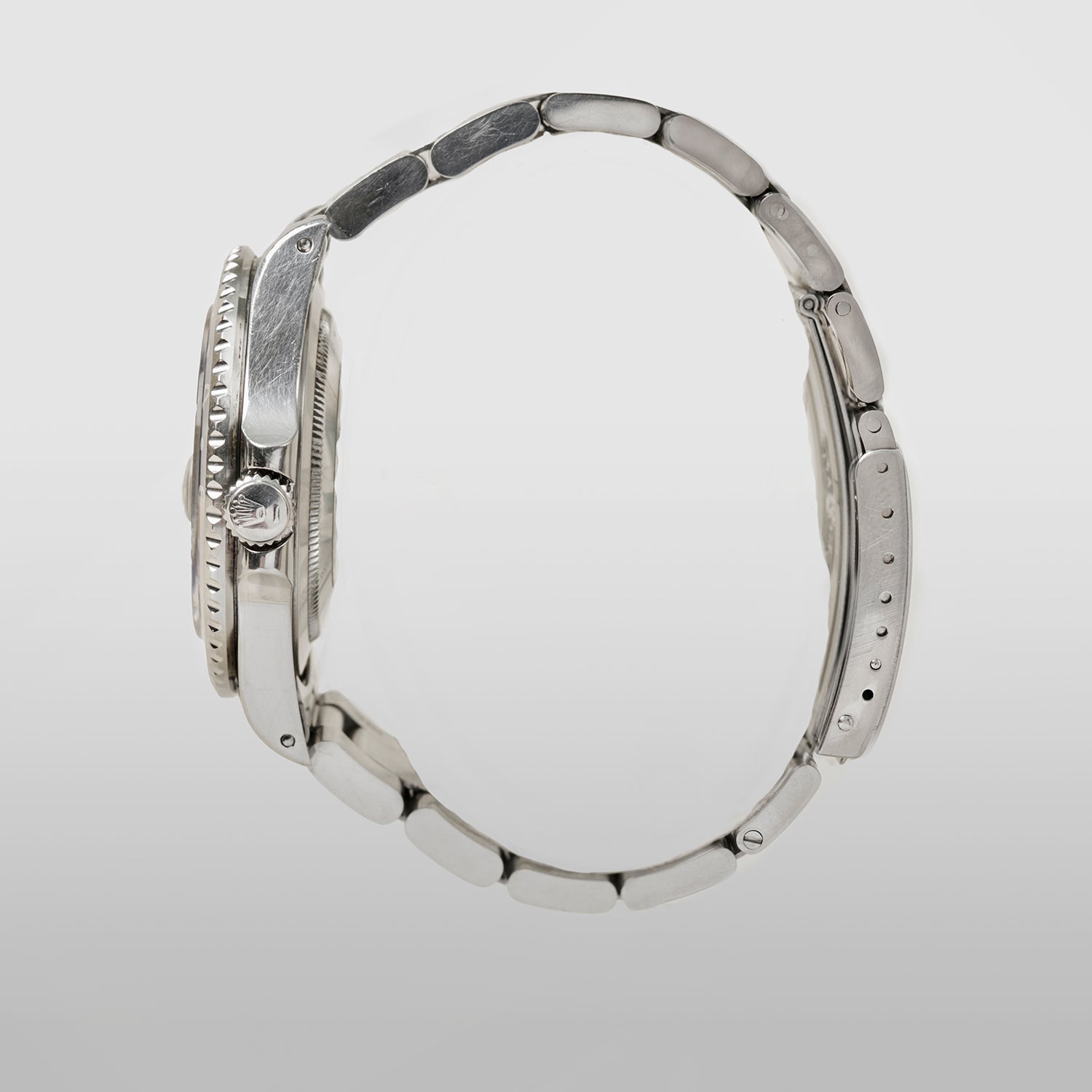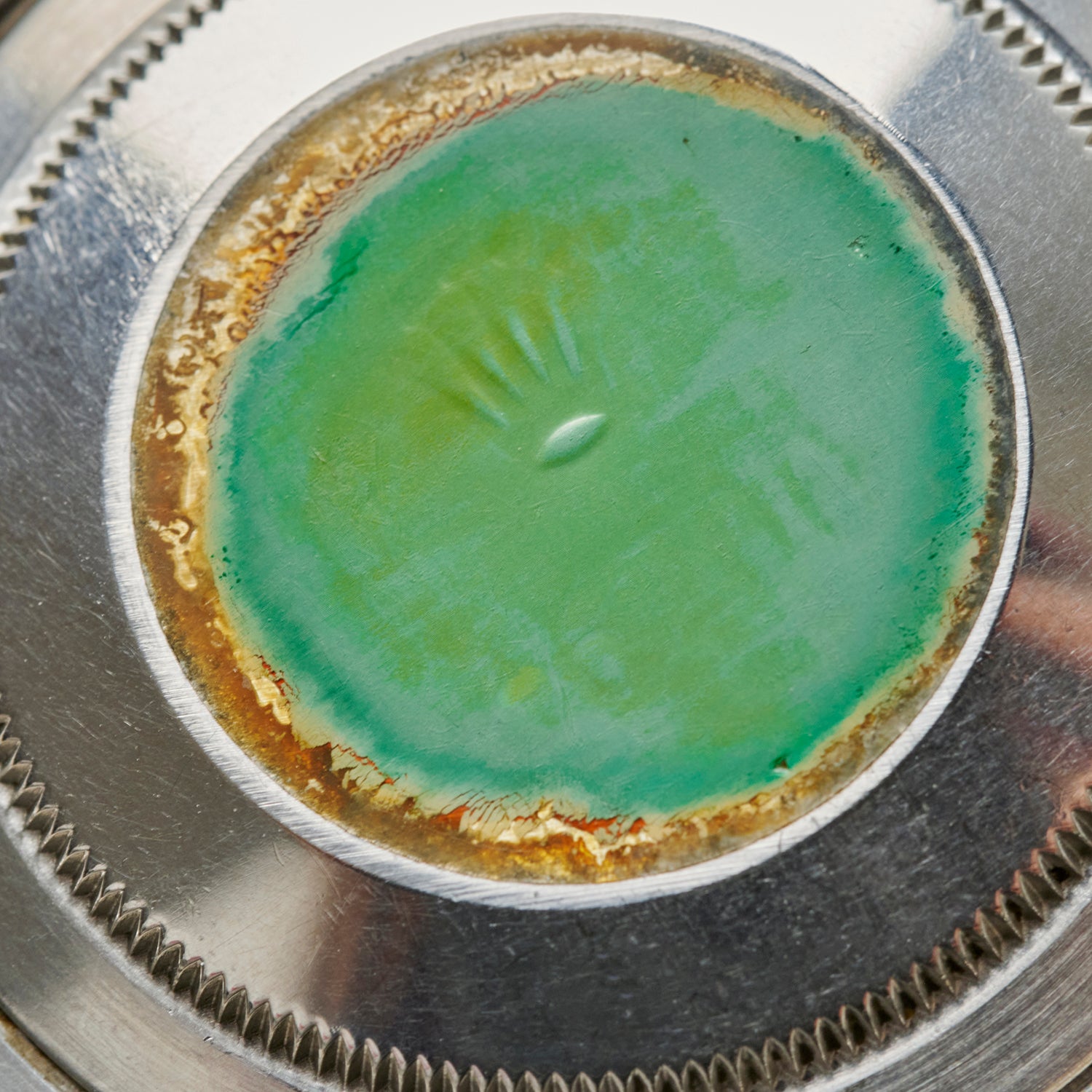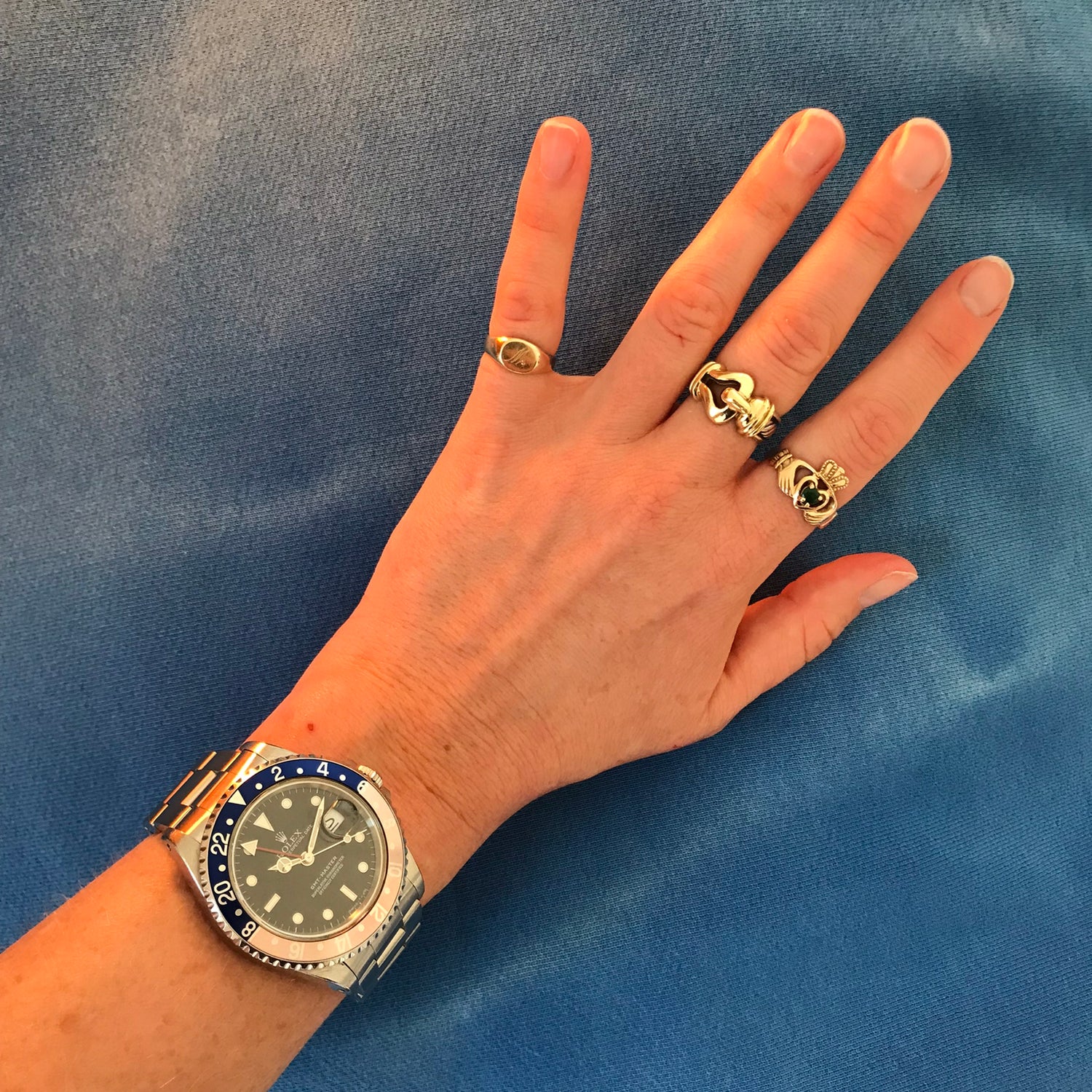Shop Dimepiece
Rolex GMT
Couldn't load pickup availability
Rolex Oyster Perpetual GMT Master reference 16700 aka “The Diet Pepsi”
THE BASICS
The GMT was the first watch I ever learned about and really cared about. It’s the watch that got me into watches, if that makes sense. I love the history behind it – how the first GMT was created for PanAm pilots… my grandmother Sally was a PanAm stewardess, so I have a fondness for that era of flying. ANYWAY, this GMT in particular is very, very special. It’s a Pepsi (meaning it has a red and blue bezel), but age has lightened the red to a light pink, hence why I am affectionately referring to these now as the Diet Pepsi. Foundwell calls this an “oddball” Rolex, aptly labeled due to the fact that this particular reference only ran for one decade, 1988–1999, with some very particular attributions you can read about below. I truly love this Diet Pepsi and hope it finds a good home on the wrist of someone with killer style.
DATE OF BIRTH: 1990
MATERIAL: Stainless steel
SIZE: 40mm
MOVEMENT: Automatic caliber 3175
CONDITION: Excellent throughout. Unpolished with original case back sticker
BOX/PAPERS: No/No
THE NITTY GRITTY:
An automatic, stainless steel, Rolex GMT Master with date, reference 16700. This watch could be considered the most iconic, and certainly the most recognizable, watch in the Rolex stable. Since its inception into the Rolex line up in 1955, this watch has been worn and loved by pilots, members of the military, movie stars, dictators and today's watch collectors.
This reference is the continuation of the more 'modern' Rolex GMT Master. The reference 16750 was introduced circa 1981 and remained in the line for around 7 years until it was replaced by this reference, the 16700 in 1988, which only ran until 1999. This was an interesting time for the GMT. This model saw the continuation and modernization of the reference. Upgrades from the long running and much loved 1675 to the prior 16750 were a quick set date function, hacking and a more water-resistant case, but the dial stayed almost the same and the plastic crystal remained. This pictured reference perhaps saw the biggest change aesthetically with the introduction of the white gold surrounds to the hour lume plots, and this glossy black dial, replacing the long running matte versions. Also, in came the upgraded sapphire crystal.
A strange and interesting development in the GMT lineage at this time was the introduction of the GMT Master II in 1983. This reference,16700, ran alongside the Master until it was phased out in 1999 with the Master II being the only reference left. The Master was only offered in stainless steel, had only two bezel insert color choices; black and pepsi, and came on both a Jubilee and Oyster bracelet, which were later upgraded to include the Oysterlock clasp. This is a very early example of the reference, having been made in 1990. So, this has the original 78360 Oyster bracelet without the Oysterlock clasp, with a date code of P for 1991.
The difference, you may ask, between the Master and Master II is one major one: the second time zone hand in the Master II can be set via the crown by pulling it out a step, while the Master works with the original hour hand. Thus, by keeping the bezel insert at 12 o’clock, 2 time zones can be represented on the watch as opposed to having to move the bezel to set the second time zone. The Master II allows for a third time zone if the bezel is then used with one of the hour hands, plus an added upgrade to the caliber, and so the Master II sold for more. Hence why this oddball reference was eventually phased out in 1999.
This dial is marked "Swiss T>25", meaning that this dial has applied Tritium luminous material. This material replaced the highly dangerous and radioactive Radium in 1963. Just like radium, tritium was also radioactive; however, it came with a much lower level of radiation and a much shorter half-life. While tritium was exponentially safer than radium, it only had a half-life of twelve years. This meant that after just a few decades, only a tiny fraction of the initial luminescence would remain. Additionally, as tritium ages, the color changes, which creates often beautiful, and highly sought after patinas on the luminous markers on these older Rolex watches. Tritium was far from perfect, which led Rolex to search for a better alternative.
The answer came during the 1990’s, from a Japanese company called Nemoto and Co., which specialized in producing luminous paint. Their new compound, called Luminova, was photoluminescent rather than radioactive, making it entirely harmless. Additionally, it was not prone to fading or discoloration like its predecessor, tritium. Luminova was far superior to tritium, and by 1998, Rolex began using it on their watches. These are now rare and collectible, as the production run was around two years, and are marked simply "Swiss". By 2000, Rolex had switched to Super Luminova, a slightly improved version of Luminova that was sold through a different supplier. These dials were marked "Swiss Made."
The watch is powered by a Rolex, Swiss made, 31 jewel automatic calibre 3175 movement that powered only this Rolex model since its launch. The power reserve was up to forty eight hours at this point. Again, this is a very interesting fact about this reference: it had its own caliber, just used here. The only real reason was a value play. Rolex was able to sell the GMT at two price points – something that seems very alien in today’s Rolex world!
The case is as you would expect to find it, a tool watch approaching almost 35-years old, with slight scratches and signs of wear. It has, however, never been polished, which is very uncommon with watches from this period. The case back sticker is also present, which is a small detail, but one that makes collectors excited nonetheless. The bezel insert is correct and original to the watch and is perhaps another one of this steller example’s best selling points. The red element of the aluminum has turned into a stunning soft pink now.
Overall, this is a superb, oddball Rolex watch, with the added bonus that it is presented unpolished and with a perfect glossy dial. This watch is just hitting its stride now, and is becoming highly sought after. It will be looked back on in the future as a rare modern classic piece of Rolex design.
Share
